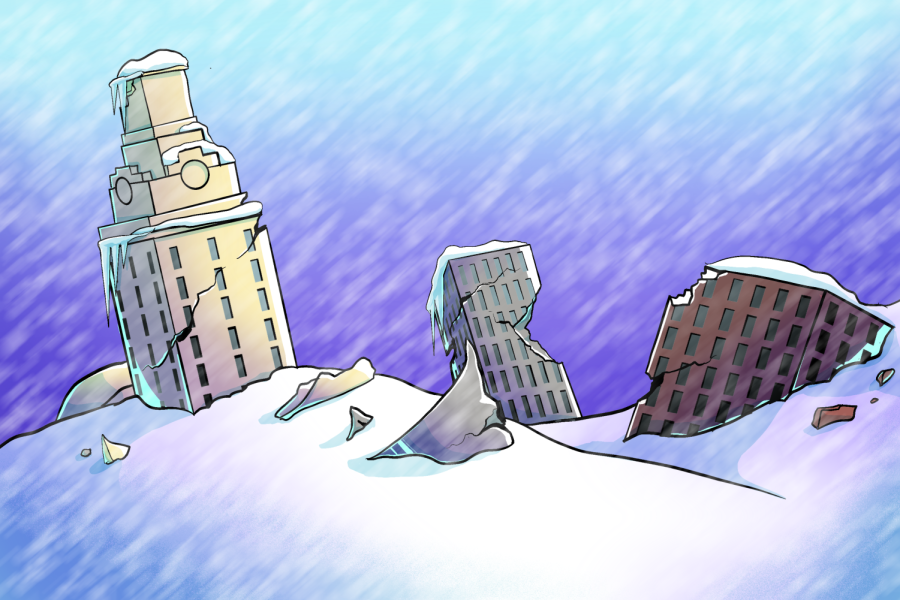Create resources for students during severe weather
February 9, 2022
Editor’s Note: This article first appeared as part of the February 4 flipbook.
Last February, when Winter Storm Uri swept through Texas, my three roommates and I had no power for five days. Our house was 40 degrees. We slept two to a bed under layers of blankets, only venturing outside to charge our phones in the car and warm up when our fingers grew numb. When the power finally turned back on, I cried.
During the storm, thousands of Austin residents were without power, water or both for nearly a week. UT students were largely left to fend for themselves. Moving forward, UT must create detailed, comprehensive plans to provide clean water, food and warming spaces to all students during a weather emergency.
Despite hazardous weather and the ongoing pandemic, students worked together to help each other. While this is admirable, the burden should not have been placed on students. We’re currently in the middle of another freeze, and yet again, students are on their own. Instead, the University should serve students during emergencies.
Kat Zhang, an advertising, Asian Studies and Chinese junior, was fortunate enough to have power and water for the duration of Winter Storm Uri. After she realized how many students were without these essentials, she quickly began organizing student volunteers to distribute clean water to students.
“There were literally people going to the fountain and filling up empty milk gallon containers with the water from there just because it was so bad,” Zhang said.
Zhang and her team of 120 volunteers provided water and bathroom access to students across West Campus and in university dorms.
“If one moderately intelligent UT student can help a considerable amount of people, a university with billions of dollars can probably (have) a lot of impact when their students are struggling,” Zhang said.
The University certainly has the funding to create resources for students during severe weather. UT must create a plan to ensure there will be multiple warming centers with clean water, restrooms and food for students, as well as safe transport to centers.
“What we like to say is that the best way to prepare is at the individual level,” Director of Emergency Preparedness Jonathan Robb said.
That’s certainly what UT students had to do during last year’s storm. The University offered few resources to students. The Union and Gregory Gym were open to students for access to water, electricity and snacks, but students had to brave a walk or drive over icy streets that were unsafe for days.
Robb said for students who cannot access campus, emergency services can really only provide students with recommendations for outside help.
“What we hope to do is be able to (inform) students that are a little further away from campus of where resources are available through the city of Austin,” Robb said. “So, the city is a great partner for the University and provides tremendous resources during emergencies and disasters as well.”
Meanwhile, students with experience driving in winter conditions were putting their own safety on the line to deliver essentials to students who were unable to leave their homes, fueled largely by student donations and resources provided by the city.
“It’s ridiculous that students have to literally bend over backwards to make sure that their fellow peers are not dying of dehydration or not starving during times of crises (when) we’re literally within 200 feet of a huge institution with so much funding and so much power,” Zhang said.
Students and their families pay the University to provide them with an education, but also to keep them safe and support them in times of crisis. The burden should not solely fall on students during an emergency.
Zaksek is a Plan II and women’s and gender studies senior from Allen, TX.



